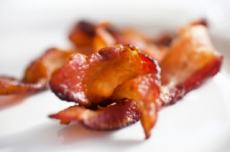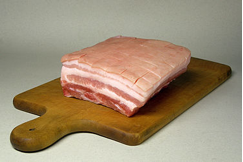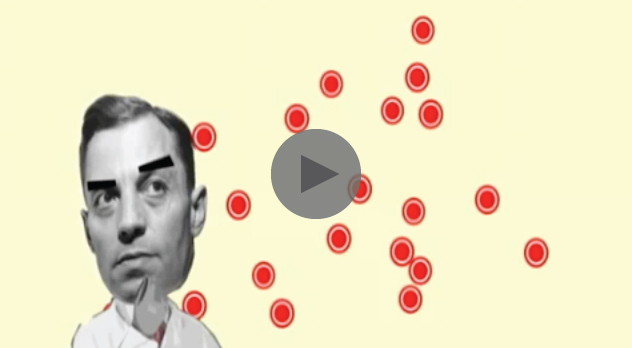It’s Bacon
 It’s Bacon! You’ve seen the commercial where the dog is running through the house sniffing like crazy looking for bacon. Passionate enthusiasm for bacon has cultivated a recent movement known as the Bacon Mania explosion. Bacon is everywhere. As a result of our fascination with the “cured belly of a swine carcass” (USDA’s definition of bacon), we now have bacon ice cream, bacon infused vodka, deep-fried bacon, chocolate-dipped bacon, bacon cupcakes, bacon doughnuts, and . . . the list just keeps growing.
It’s Bacon! You’ve seen the commercial where the dog is running through the house sniffing like crazy looking for bacon. Passionate enthusiasm for bacon has cultivated a recent movement known as the Bacon Mania explosion. Bacon is everywhere. As a result of our fascination with the “cured belly of a swine carcass” (USDA’s definition of bacon), we now have bacon ice cream, bacon infused vodka, deep-fried bacon, chocolate-dipped bacon, bacon cupcakes, bacon doughnuts, and . . . the list just keeps growing.
I had a client ask me last week if bacon was bad for him. Everything he read on the internet led him to believe that saturated fat, which bacon is supposedly high in, will clog arteries and cause heart disease. So let’s take a look at bacon to see if it should be part of a “healthy diet.”
 Bacon is cured meat prepared from a pig. In the U.S. it usually comes from the boneless fatty cut of meat from the belly of a pig. It is usually cured using large quantities of salt, either in brine or in dry packing.
Bacon is cured meat prepared from a pig. In the U.S. it usually comes from the boneless fatty cut of meat from the belly of a pig. It is usually cured using large quantities of salt, either in brine or in dry packing.
So the first concern with bacon is obviously the fat, which is what makes it taste so good. Two large slices of cooked bacon (I cooked and weighed 2 pieces of bacon from Moody’s butcher shop.) weighs about .8 oz.
That much bacon contains 122 calories, 8 grams of protein, and 9.6 grams of fat, 3 grams of which are saturated. Since fat contains 9 calories per gram and protein contains 4 calories per gram, bacon is about 26% protein and 74% fat. So even though 2 slices of bacon is mostly fat, the amount of fat really isn’t that much.
So for the past 40 years we’ve been told to avoid saturated fat if we want to prevent heart disease. The U.S. Dietary Guidelines and the World Health Organization both recommend consuming less than 10% of our calories from saturated fat. The American Heart Association’s recommendation is even lower at 7%. That’s about 20 to 30 grams of saturated fat a day for most people.
But their recommendations really don’t have any science to back them up. Ancel Keys is considered the father of the lipid hypothesis, which states that saturated fat intake increases total cholesterol, which causes heart disease. His famous Seven Countries Study found a direct correlation between fat consumption and heart disease in 7 different countries. Keys actually tracked fat consumption and heart disease in 22 countries. He could not find a correlation between fat consumption and heart disease in 15 of the countries in his study, so he threw out their data. Did you get that? Two thirds of the countries he studied had no correlation between saturated fat consumption and heart disease.
Check out this Youtube Video to understand how Keys tricked all of us.
The truth is our ancestors ate fat of all kinds, including saturated fat, and they did not have heart disease. So, if you’re worried about eating bacon because of the saturated fat—don’t worry, our ancestors didn’t.
The next issue to worry about in bacon is sodium. Our two slices of bacon contains about 337 grams of sodium. Not bad when the daily limit for sodium intake is 2300 grams or less. Leave the salt shaker alone, and you’ll be okay with this one.
But what about the nitrates in the bacon? Sodium nitrate is almost always used to preserve bacon and add color (pinkish red) to the meat. It inhibits the growth of disease causing microorganisms and gives bacon a long shelf life.
When you start to read about nitrites look out, your head will start spinning very quickly. There is a lot of evidence that says nitrates are okay and are great for preserving meats. There is also a lot of evidence that says nitrites should be avoided because they cause cancer. Who do your believe? I think at some point you have to use logic to help you make a decision about whether or not you should buy nitrite free bacon.
The problem with nitrites is when you eat them, they are converted to nitrosamines, which are potent cancer causing agents.
The folks that argue that nitrites are okay are quick to point out that green leafy vegetables and root vegetables contain naturally occurring nitrites. For me, the key phrase here is naturally occurring. The nitrites are supposed to be in the vegetables. Also the vegetables contain compounds that inhibit the formation of the harmful nitrosamines in your body.
If you use simple logic, I would say avoid bacon that is cured with nitrates, because the nitrates don’t naturally exist in the bacon. Eat foods as unprocessed as possible.
To shed more light on both the fat and nitrite consumption, in 2010 the Harvard School of Public Health conducted a meta analysis of all the studies ever conducted on red meat consumption. They reported that red meat consumption is not associated with either heart disease or type 2 diabetes, but eating processed meats resulted in a 42% greater risk for heart disease and a 19% greater risk for type 2 diabetes.
Holy cow! Pass the bacon, and hold the nitrites.
By the way, you can buy nitrite free bacon at Moody’s Butcher Shop and Whole Foods.


